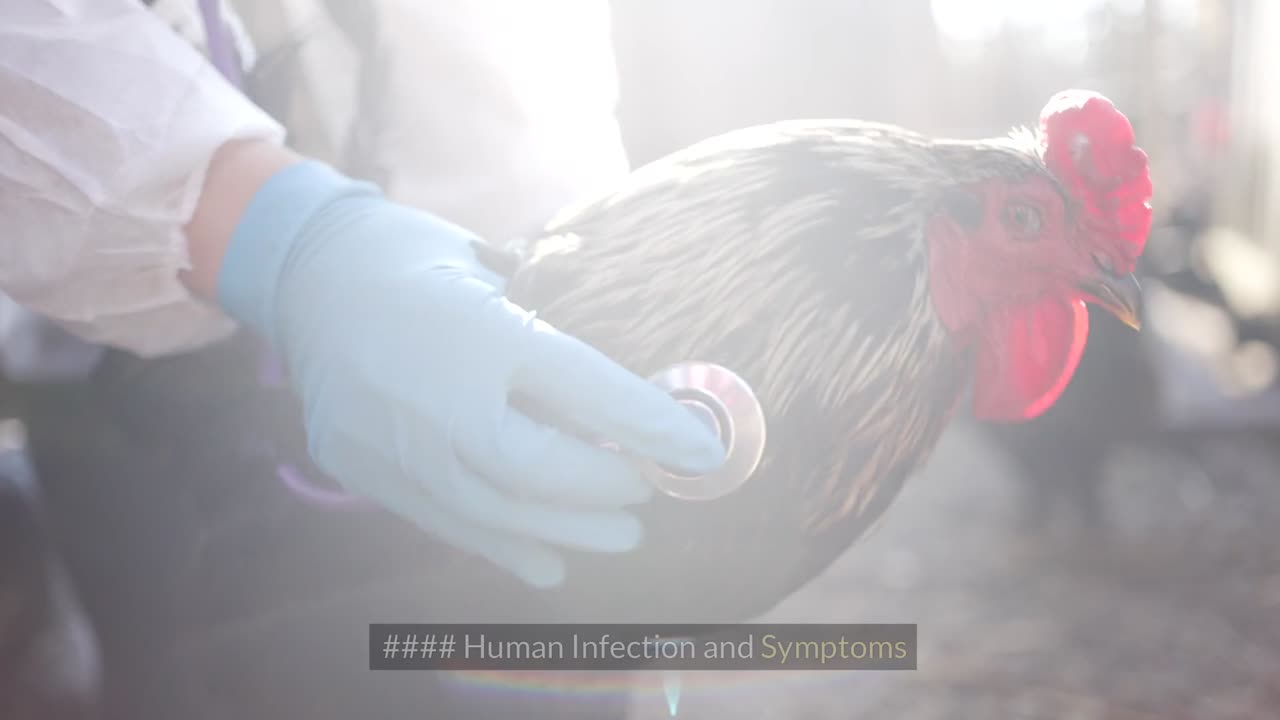Premium Only Content

May 31, 2024
###
Bird flu, also known as avian influenza, is a viral infection that primarily affects birds but can also infect humans and other animals. The disease is caused by influenza type A viruses and has been a significant concern for public health authorities worldwide due to its potential to cause severe illness and economic disruption.
#### Types of Avian Influenza Viruses
There are several subtypes of avian influenza viruses, classified based on two proteins on their surface: hemagglutinin (H) and neuraminidase (N). The most well-known and concerning subtypes include H5N1 and H7N9, which have caused outbreaks in both birds and humans.
- **H5N1**: First detected in 1997 in Hong Kong, this subtype has caused numerous outbreaks in poultry and sporadic human cases. It is highly pathogenic, meaning it can cause severe disease and has a high mortality rate in infected birds and humans.
- **H7N9**: Identified in China in 2013, this subtype has led to several waves of human infections. It tends to be less deadly in birds, which can spread the virus without showing symptoms, making it harder to control.
#### Transmission and Symptoms
Bird flu viruses are usually spread through direct contact with infected birds, their droppings, or contaminated environments. In some cases, the virus can infect humans who have close contact with infected poultry or surfaces contaminated with the virus. Human-to-human transmission is rare but can occur, raising concerns about potential pandemics.
**Symptoms in Birds**:
- Sudden death
- Lack of energy and appetite
- Decreased egg production
- Swelling of the head, comb, eyelids, wattles, and legs
- Nasal discharge, coughing, and sneezing
**Symptoms in Humans**:
- Fever and chills
- Cough
- Sore throat
- Muscle aches
- Eye infections (conjunctivitis)
- Severe respiratory illness, including pneumonia
#### Recent Outbreaks and Impact
In recent years, bird flu outbreaks have been reported in various parts of the world, affecting both wild and domestic bird populations. These outbreaks often lead to the culling of millions of birds to prevent the spread of the virus, causing significant economic losses in the poultry industry.
For example, the H5N1 subtype has led to major outbreaks in Asia, Europe, and Africa, resulting in substantial culling of poultry and economic hardship for farmers. The H7N9 subtype has primarily affected China, with numerous human cases and fatalities reported during multiple waves of infection.
#### Public Health Response and Prevention
To control and prevent the spread of bird flu, public health authorities implement several measures, including:
- **Surveillance and Monitoring**: Regular monitoring of bird populations for signs of illness and virus detection.
- **Biosecurity Measures**: Enhancing hygiene and biosecurity practices in poultry farms to prevent virus introduction and spread.
- **Vaccination**: Vaccinating poultry against avian influenza in areas with a high risk of outbreaks.
- **Culling and Quarantine**: Rapid culling of infected and exposed birds and quarantining affected areas to contain outbreaks.
- **Public Awareness**: Educating the public, particularly those working with poultry, about the risks and preventive measures.
Future Concerns and Research
The potential for bird flu viruses to mutate and acquire the ability to spread easily between humans remains a significant concern for public health officials. Research is ongoing to understand the virus's behavior, develop effective vaccines, and improve diagnostic methods.
In summary, bird flu is a serious global health issue that requires ongoing vigilance, research, and coordinated efforts to prevent and control outbreaks. While the risk to the general public remains low, individuals working with poultry or in close contact with birds should take appropriate precautions to protect themselves and reduce the risk of infection.
-
 8:00
8:00
Congressman Eli Crane
14 hours agoThe D.C. Crime Problem | Democrats' Greatest Lies – Vol.2
2001 -
 17:54
17:54
Dr Disrespect
16 hours agoDR DISRESPECT vs VAN DAMME in Hitman 3
53.1K11 -
 2:05:26
2:05:26
Side Scrollers Podcast
18 hours ago4Chan SUES UK Government + Craig Has Mental Illness Fatigue + Knight Rider REBOOT | Side Scrollers
29.1K8 -
 19:26
19:26
GritsGG
1 day agoChat Picked My Hair Color! All Pink Loadout & Operator Challenge!
22.6K4 -
 10:32
10:32
Nikko Ortiz
1 day agoFunniest Fails Of The Month
53.2K7 -
 1:27:34
1:27:34
TruthStream with Joe and Scott
4 days agoArchitect Richard Gage: 911 truths and more #482
27.8K7 -
 LIVE
LIVE
Lofi Girl
2 years agoSynthwave Radio 🌌 - beats to chill/game to
164 watching -
 56:48
56:48
The HotSeat
14 hours agoI'm NOT Sorry! Guns Aren’t the Problem—Godless Culture Is
32.3K30 -
 9:43
9:43
The Pascal Show
15 hours ago $0.52 earnedWHOA! Annunciation School Sh**ter Identified... Heartbreaking & Insane
4.98K2 -
 22:42
22:42
Liberty Hangout
9 hours agoCollege Democrats Say Gangs Are GOOD!
78.3K68